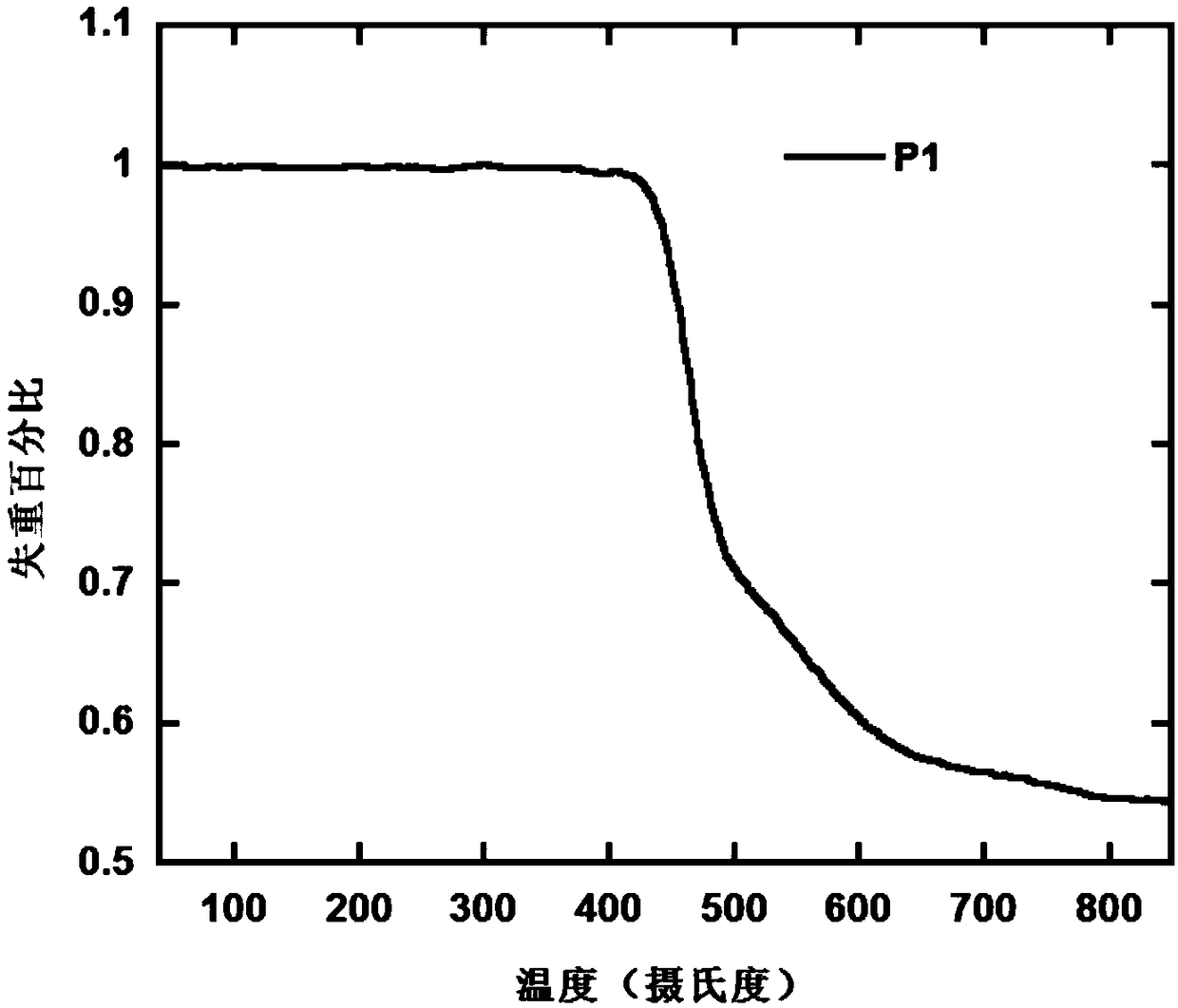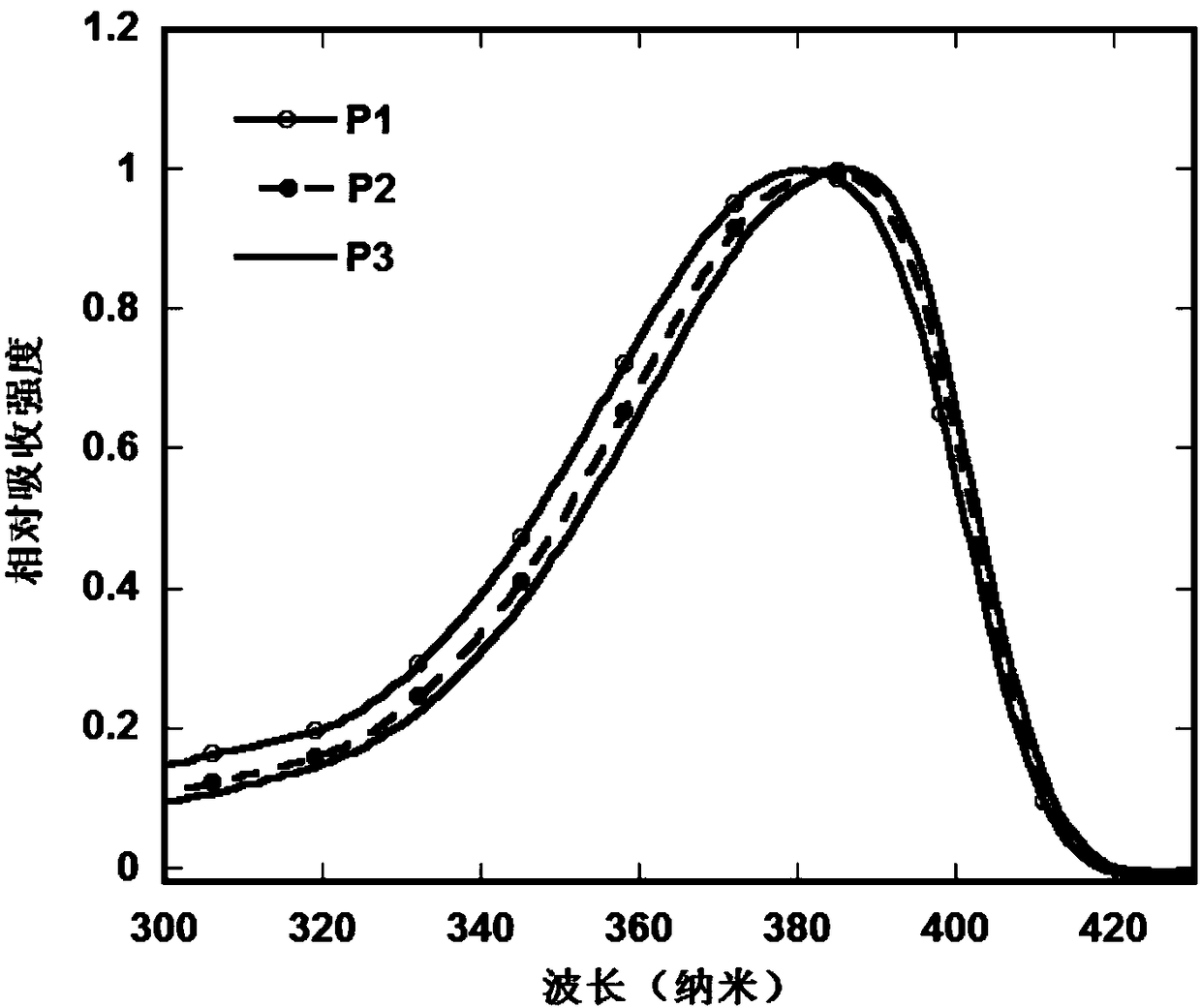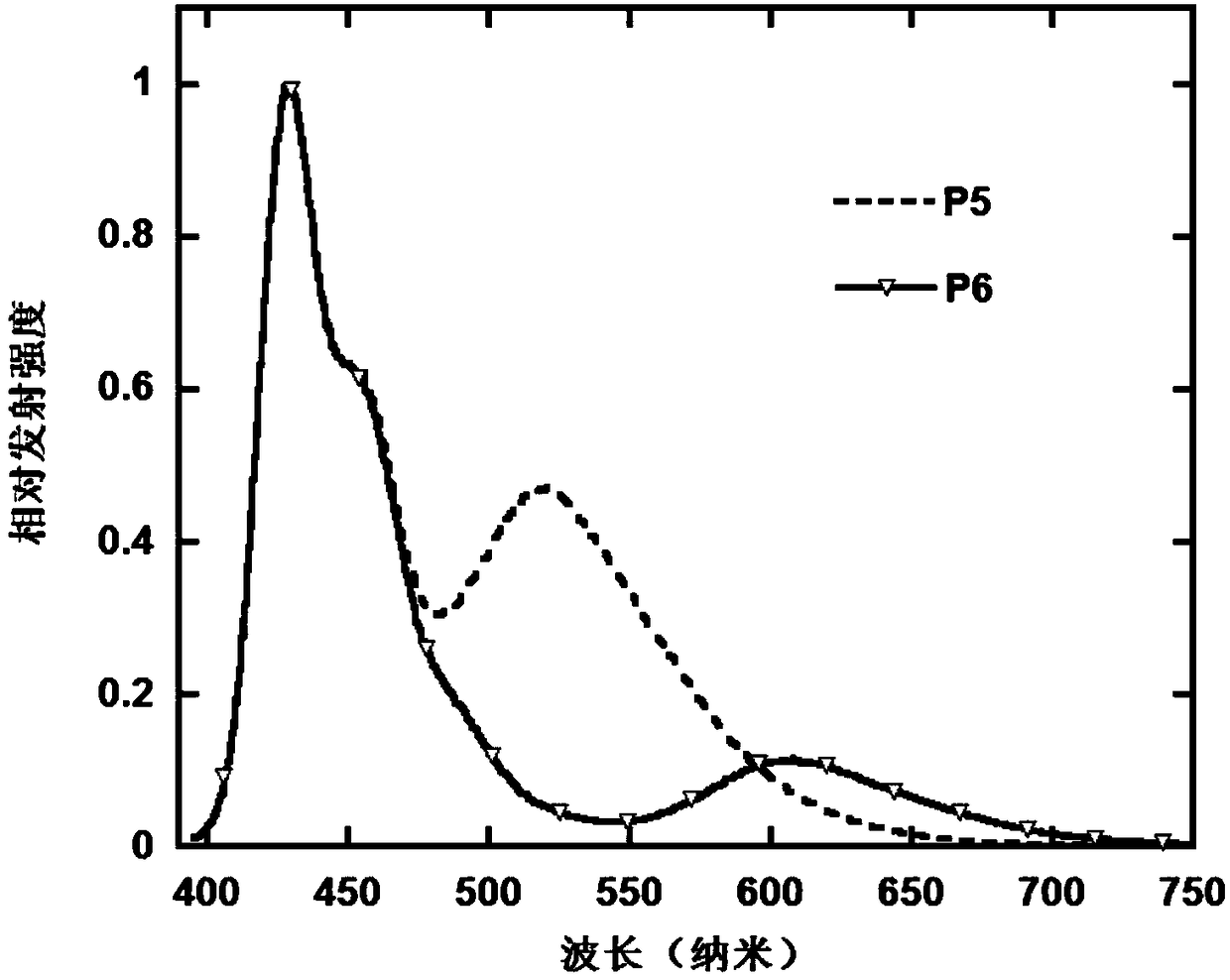Electroluminescent monomer and polymer and preparation and application methods thereof
A luminescence and polymer technology, applied in the direction of electrical solid-state devices, semiconductor/solid-state device manufacturing, circuits, etc., can solve the problems of reducing the color purity and efficiency of devices
- Summary
- Abstract
- Description
- Claims
- Application Information
AI Technical Summary
Problems solved by technology
Method used
Image
Examples
Embodiment 1
[0075] Embodiment 1: the preparation of polymerization monomer M1
[0076] Preparation of ethyl o-bromobenzoate: In a 500mL three-neck flask, dissolve o-bromobenzoic acid (20.1g, 0.1mol) in 200ml ethanol, and add 20ml of concentrated sulfuric acid dropwise to the reaction solution, and stir at room temperature for 12 hours , stop the reaction, quench the reaction with water, extract with dichloromethane and dry with anhydrous magnesium sulfate, obtain a yellow liquid after the solution is concentrated, purify by silica gel column chromatography, the mixed solvent of petroleum ether / dichloromethane (4 / 1 , v / v) was the eluent, and the yield was 87%. 1 H NMR, 13 CNMR, MS and elemental analysis results show that the obtained compound is the target product, and the chemical reaction equation of the preparation process is as follows:
[0077]
[0078] Preparation of ethyl 2-(4,4,5,5-tetramethyl-1,3,2-dioxabor-2-yl)ethyl benzoate: Under argon atmosphere, ethyl o-bromobenzoate T...
Embodiment 2
[0096] Example 2: Synthesis of Electroluminescent Polymer P1
[0097] Under argon atmosphere, 2,7-bis(4,4,5,5-tetramethyl-1,3,2-dioxaborolane-diyl)-9,9-dioctylfluorene ( 321 mg, 0.50 mmol), 2,7-dibromo-9,9-dioctylfluorene (246.8 mg, 0.45 mmol) and 2,11-dibromo-13,13,14,14-tetrahexyl-13,14 -Dihydrodibenzo[c]indole[2,1-a]fluorene (M1) (39.9mg, 0.05mmol) was added to a 50ml two-neck flask, then 12ml of refined toluene was added, and then palladium acetate (2.80mg, 12.45 μmol) and tricyclohexylphosphine (6.98mg, 24.90μmol), then add 3ml tetraethylammonium hydroxide aqueous solution, raise the temperature to 80°C, and react for 24 hours; then add 20mg phenylboronic acid for capping, and after 12 hours, use 0.3ml of bromobenzene was capped; after continuing the reaction for 12 hours, stop the reaction, and when the temperature dropped to room temperature, the product was added dropwise in 300ml of methanol for precipitation, filtered, and then the crude product was dissolved in 20m...
Embodiment 3
[0101] Example 3: Synthesis of electroluminescent polymer P2
[0102] Under argon atmosphere, 2,7-bis(4,4,5,5-tetramethyl-1,3,2-dioxaborolane-diyl)-9,9-dioctylfluorene ( 321 mg, 0.50 mmol), 2,7-dibromo-9,9-dioctylfluorene (219.4 mg, 0.40 mmol) and 2,11-dibromo-13,13,14,14-tetrahexyl-13,14 -Dihydrodibenzo[c]indole[2,1-a]fluorene (M1) (79.9mg, 0.10mmol) was added to a 50ml two-neck flask, then 12ml of refined toluene was added, and then palladium acetate (2.80mg, 12.45 μmol) and tricyclohexylphosphine (6.98mg, 24.90μmol), then add 3ml tetraethylammonium hydroxide aqueous solution, raise the temperature to 80°C, and react for 24 hours; then add 20mg phenylboronic acid for capping, and after 12 hours, use 0.3ml of bromobenzene was capped; after continuing the reaction for 12 hours, stop the reaction, and when the temperature dropped to room temperature, the product was added dropwise in 300ml of methanol for precipitation, filtered, and then the crude product was dissolved in 20m...
PUM
| Property | Measurement | Unit |
|---|---|---|
| Optical bandgap | aaaaa | aaaaa |
| Effective area | aaaaa | aaaaa |
| Maximum lumen efficiency | aaaaa | aaaaa |
Abstract
Description
Claims
Application Information
 Login to View More
Login to View More - R&D
- Intellectual Property
- Life Sciences
- Materials
- Tech Scout
- Unparalleled Data Quality
- Higher Quality Content
- 60% Fewer Hallucinations
Browse by: Latest US Patents, China's latest patents, Technical Efficacy Thesaurus, Application Domain, Technology Topic, Popular Technical Reports.
© 2025 PatSnap. All rights reserved.Legal|Privacy policy|Modern Slavery Act Transparency Statement|Sitemap|About US| Contact US: help@patsnap.com



